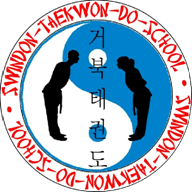



|
What I’ve discovered
There are two references in this pattern meaning, the first part refers to the Hwa-Rang and it is here that I will begin.
The Hwa-Rang (flowering youth) were selected from the young sons of the Silla nobility; this idea had developed after the most beautiful females had been sought in a kind of beauty contest, which had ended in bitter rivalry and murder.
At around 576 A.D. the King converted the Hwa-Rang groups into elite military units, they were taught the ‘Five Injunctions for Mundane Life’, written by a Buddhist Monk.
The male youths were trained in art, literature, dance, science and of course combat, archery, charioteering and warfare. They were the elite fighting force of the day.
Often said to be the predecessor of the Samurai, the Hwa-Rang were surrounded by legend and lived by an honour code comparable to the Knights of King Arthur.
Many of the Great Korean military tacticians were Hwa-Rang.
The art of foot fighting had been practised in Korea for many years, however the Hwa-Rang refined it and developed it, renaming it Tae-Kyon.
The hand to hand combat learned was based on the Buddhist principles of Um-Yang (Yin-Yang in Chinese), this philosophy included the blending of hard and soft techniques and linear and circular techniques.
The rank Hwa-Rang was awarded after the position of teacher in the martial arts had been achieved; the Hwa-Rang would then be put in command of between 500 and 5000 students, or Hwarang-Do as a Kuk-Son.
Code of the Hwarang: Sesok Ogye
Loyalty to the King Obedience to Parents Trust among friends Never retreat in Battle Justice in killing
The 29 movements in the pattern refer to the 29th infantry division, this is the division commanded by General Choi Hong Hi (9th Dan). This division was also known as the fist division and its symbol was a fist on the Korean peninsular representing the desire to end the division of the country.
The number 2 represents the divided Korea and the 9 represents the fist.
It was in this military division and under General Choi’s command that Taekwon-Do developed into its modern form, after a blending of Tae-Kyon and Karate.
|
|
In his encyclopaedia General Choi told us: Hwa-Rang is named after the Hwa-Rang youth group, which originated in the Silla Dynasty in the early 7th century. The 29 movements of this pattern refer to the 29th Infantry Division, where Taekwon-Do developed into maturity. |